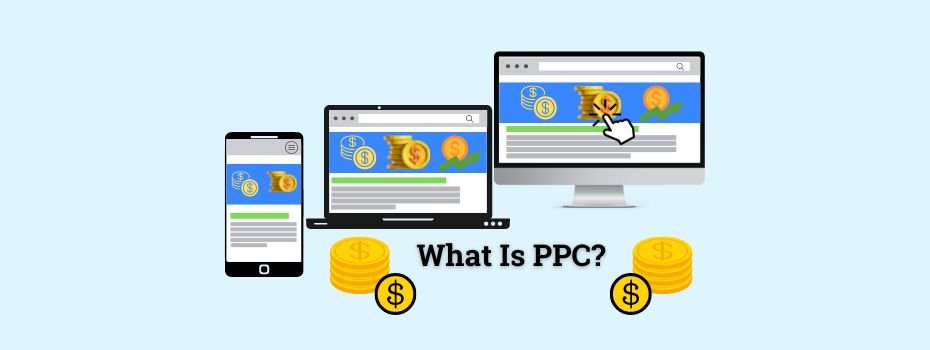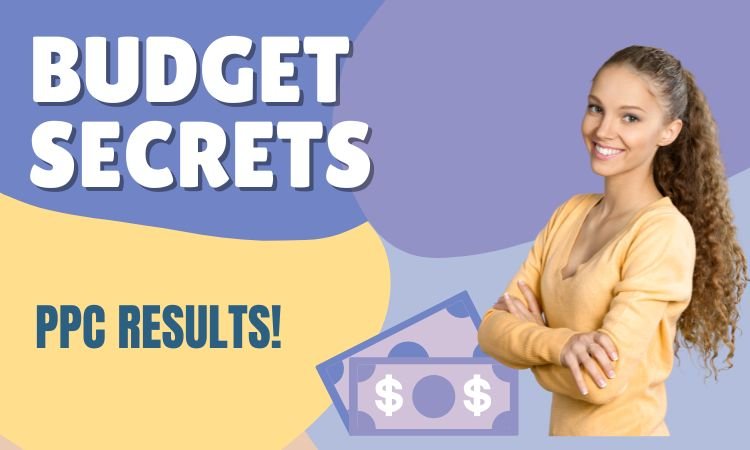To improve the results of your PPC campaigns, it is essential to understand effective strategies. PPC is a commonly used method for driving traffic to websites and increasing awareness about a product or service. Marketers use PPC to increase traffic and conversions on websites through ads, often through keyword research and seasonal campaigns. PPC ads are placed on the web based on the user’s search intent, known as keywords or phrases. These types of ads are called display ads. In this article, we will delve into ways to improve PPC results.
Table of Contents
In this article, we will cover the basics of PPC and PPC campaigns, including how the PPC model works, strategies for running effective campaigns to increase PPC results, and the importance of the PPC model. We will also discuss various aspects of PPC, such as the types of ads and the role of keywords in targeting potential customers. Overall, the article will help you to improve PPC results.
What Is PPC?
PPC stands for Pay-Per-Click.
PPC is a mechanism used on the internet to bring potential customers to specific websites. With this technique, advertisers pay every time users to clicks on the PPC ad containing their website’s link. The more successful the marketing channel, the cheaper the cost-per-click.

Pay-per-click is the most effective and preferred advertising model. With the rise of social media and digital marketing, PPC ads can give you a better return on your investment. Every time someone clicks on a PPC ad, it counts in conversion and you pay for the click.
Good pay-per-click campaigns are not just effective, but also cost-effective. With the success of Google Ads, search engine marketing has become an important channel for most businesses.
Related: Google Advertising – Display Ads vs. Search Ads
What Is a PPC Campaign?
A PPC campaign is a marketing campaign where companies or individuals pay Facebook, Google, and Twitter to bring traffic to their websites. It is typically a short-term campaign that lasts a few weeks or months.
A pay-per-click campaign aims to get as many people to visit your website as possible. To do that, companies use advertisements — This includes advertisements such as digital billboards.
Marketers use ads and campaigns to help drive impressions and clicks to their websites. Using these campaigns can increase the number of leads and better manage & track their overall marketing goal.
Pay-per-click advertising is an important marketing strategy. PPC simply means pay when someone clicks Your ad! Keywords are an important aspect of PPC ads. They allow marketers to know what to incorporate into their campaigns to increase the click-through rate.
The more relevant the search results are to a specific keyword, the more successful an online PPC campaign becomes. It is a key component of lead generation and can increase sales.
Related: How to Make Money From Google AdSense?
How Does the PPC Model Work?
As mentioned above, keywords are the primary component of the pay-per-click model. Researching and analyzing the most applicable keywords minimizes the cost and shows your ad to target users. A target user is the one searching with any of your specific keywords in Search Engines like Google, Yahoo, or Bing (in the case of Search Ads).
The pay-per-click model is beneficial to publishers and advertisers. Advertisers benefit from generating more leads and higher conversion rates. In the process, marketers can keep track of results, learn from their shortcomings and identify the next steps in their PPC campaigns.
Publishers benefit from higher profits, increased subscriber engagement, and increased revenue. Understanding the pay-per-click model lets advertisers understand how best to optimize the campaign for profitability.
Bid-Based Model
Flat-Rate Model
The 2 PPC models to determine advertising rates are the bid-based model, and the flat-rate model.
1. Bid-Based Model
In the bid-based model, advertisers bid for the ad spots and state the maximum amount they will pay. Using an automated tool, initiate an auction that runs every time the ad spot is triggered by a visitor.
With the bid-based model, advertisers bid for ad space on the publisher’s website. The publisher then uses the advertising website’s current ranking to determine which advertisers have the highest bids.
Advertisers want their ads to be clicked on so that the costs spent on their ads are more than met.
2. Flat-Rate Model
With the flat-rate model, publishers let advertisers know the fixed-price per click. Different advertising spots on the publisher’s website have different PPC rates.
The flat-rate model allows the publisher to set a base rate per click. As an advertiser, it’s possible to negotiate a lower price if there is a possibility of a high-value or long-term contract.
The flat-rate model is most often used in the B2B advertising market, where marketers need to target a specific customer for more clicks.
Top 7 Ways to Improve PPC Campaign Results
To run a PPC campaign, you’ll need a website or landing page that houses relevant ad copy. Remember that this means that clicks are only worth so much as they relate to what your audience is searching for.
PPC can help to increase engagement rate provided your website should be as straightforward as possible, without too many distractions and unnecessary information.
Let’s talk in detail about “effective PPC Campaigns to increase results”:
1. Optimize Your Website
Before starting with the campaign, it is important to first optimize your website and the landing pages. People click on intriguing ads. If the corresponding landing page is generic or unattractive, the potential customer will probably bounce.
Optimizing your website can be done through a series of steps such as Image optimization, relevant content, CSS/JS and HTML optimization, SQL query optimization, and Good hosting so that it takes minimum time to load.
Writing enticing and attention-grabbing headlines with straightforward website copy can be very much helpful. Include images & videos to keep the users’ attention. Use stand-out quotations & bullets as needed.
2. Select a PPC Model
From the “How Does a PPC Model Work”, select one of the 2 models to identify how ads will be placed. The flat-rate and bid-based models are both good for different advertisers.
The bid-based model better suits people who have already run PPC campaigns before and are familiar with how they work. In this model, less time is needed to manage the campaign. The flat-rate model is best for people new to PPC campaigns, especially those with a lower budget.
3. Set a Budget
When creating your campaign, pay attention to your budget and what you want to accomplish. Planning out what you want to get from your PPC campaign is essential to ensure it can work for you and your business.

Use a $25 investment to test the waters. With a pay-per-click campaign, a decision must be made on how much of the profit you are willing to sacrifice. This includes the profit per conversion. Try to let the campaign run for at least a month for a proper calculation.
4. Research & Select Keywords Wisely
Undoubtedly, keywords are one of the key components of PPC campaigns. Effective keywords allow the search engine to determine where your ads should be displayed for the best possible conversion. Analyze your competitors, be specific, and use SEMrush or Google keyword search for accuracy.
Consumers only click on ads and websites they find relevant to them! So, maximize your campaigns’ reach by understanding and using PPC keyword research tools that map how people search on Google. Also, put yourself in your customer’s shoes.
5. Design a Killer Ad
Once the landing page is optimized, the PPC model & budget are finalized, and the keywords are chosen, it’s time to design the ad. Remember, be short & direct to catch people’s attention. There isn’t a lot of time or room to add too much info.
If you’re creative, the ad could be shorter than 3 sentences. Make it catchy and clear! Make your ad representative of your brand and your desired goal. Structure the ad copy based on the desired outcome, such as increasing sales or traffic.
6. Include a Call to Action
The call to action is something a lot of people forget when running ads. Remind people to take an action to make them feel that their time spent looking at the ad was to take an action. The CTA should be in its own section, and it should be commanding but respectful.
Without a CTA, the ad is pointless. If you have a CTA, you’re halfway there! Use this feature to grab the reader’s attention, and entice them. Let them know what they should do next. Ensure it is concise, clear, short, and sweet.
7. Test & Track Your Ads for Performance
The work isn’t over simply because the ad is running. It is essential to track the ads and measure their performance. This allows you to make changes if needs be for better results. It also gives you a better picture of your campaign.
A/B testing is a great way to test and track performance. It is a simple way to test different ads to see which will be the most effective. You can then compare them for long-term results and avoid wasting money on an ad that isn’t effective.
Related: The Importance of Online Marketing for Business Growth in 2023
PPC Results: Importance of Pay Per Click Campaigns
PPC results refer to the outcomes or outcomes displayed in search engine advertising platforms, such as Google Ads or Bing Ads, when advertisers participate in PPC campaigns. It’s helpful in improving quality score of the website.
And, PPC campaigns can yield several positive outcomes for businesses. Here’s an explanation using both text and bullet points to highlight the 6 key benefits and results of digital advertising:
1. Increased Visibility and Brand Exposure
- PPC ads appear at the top of search engine results pages (SERPs) or within social media feeds, giving your brand instant visibility to potential customers.
- PPC advertising allows your brand to gain maximum exposure and increase its visibility among the target audience.
2. Precise Targeting and Reach
- PPC platforms provide advanced targeting options, enabling businesses to reach specific demographics, locations, interests, and behaviors.
- With PPC, you can precisely target your ideal audience, ensuring your ads are shown to the right people at the right time.
3. Immediate and Measurable Results
- PPC campaigns generate immediate traffic to your website, unlike organic search efforts that can take time to build traction.
- Through PPC, you can start receiving relevant traffic and potential customers right away, providing immediate results.
4. Cost Control and ROI Tracking
- PPC allows advertisers to set a budget, control spending, and adjust bids based on the performance of ads.
- PPC advertising offers cost control, as you only pay when someone clicks on your ad. Additionally, tracking tools allow you to measure the return on investment (ROI) of your PPC campaigns.
5. Flexibility and Optimization
- PPC campaigns can be modified, optimized, and A/B tested to improve their effectiveness and achieve better results.
- It provides flexibility to make adjustments and improvements to your ads and targeting based on real-time data and insights.
6. Enhanced Conversion Rates
- By targeting specific keywords and audiences, PPC campaigns can drive highly relevant traffic, leading to increased conversion rates.
- PPC enables you to reach potential customers who are actively searching for products or services similar to what you offer, increasing the likelihood of conversions.
Conclusion
It is crucial to include PPC ads in marketing campaigns. The rise of social media and the improvement in search engine results makes it easier to target your desired audience.
The results with PPC are truly priceless and worth the expenditure. You can’t put a price tag on the great things you will attract and the ROI. In addition, you can put more effort into improving your website’s design and content for better ranking.
Ultimately, you will have the flexibility to determine your day-to-day operations, because PPC ads will be set and will remain consistent.
[article_faq]





